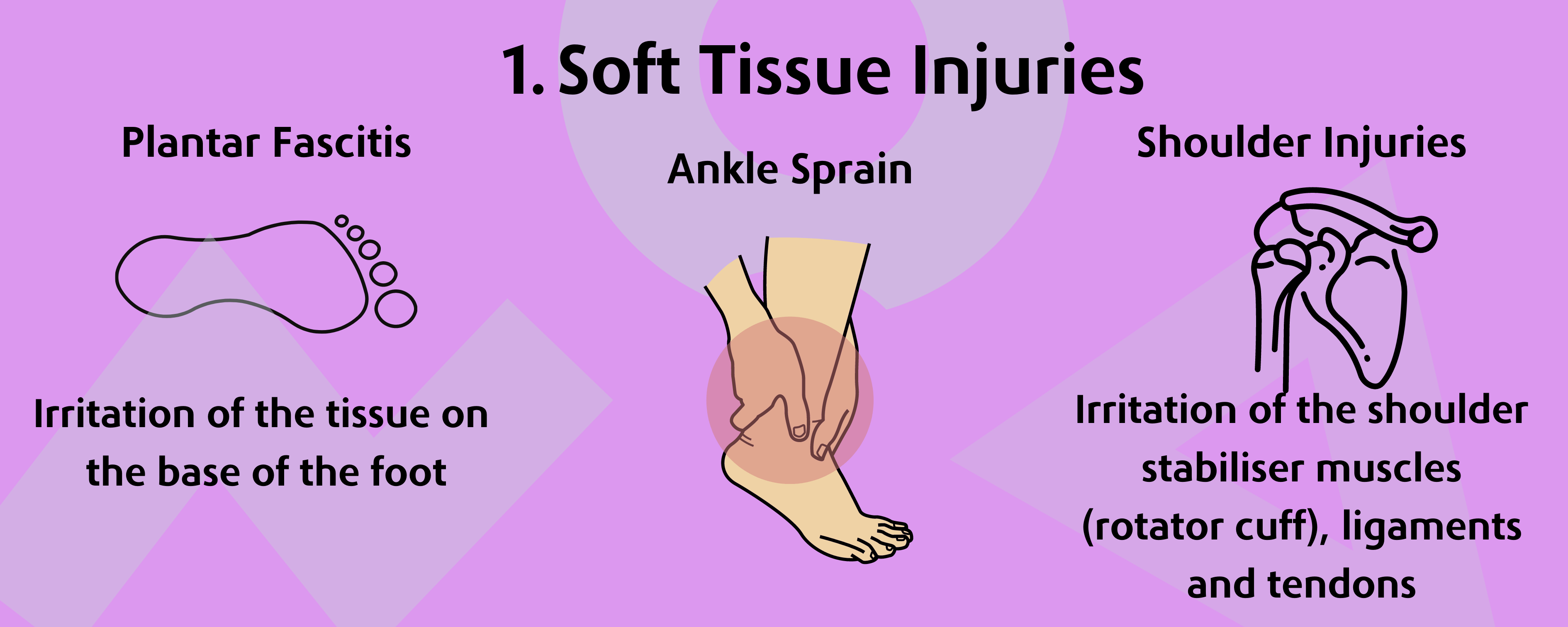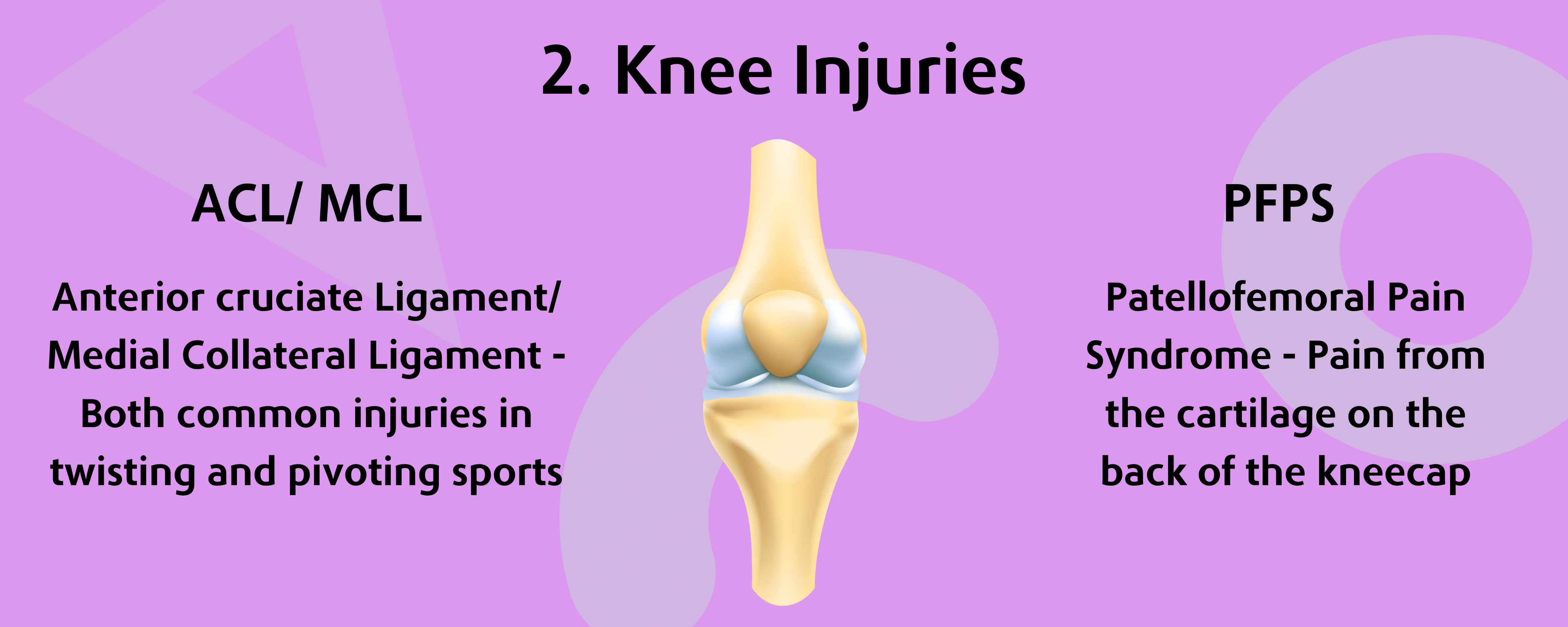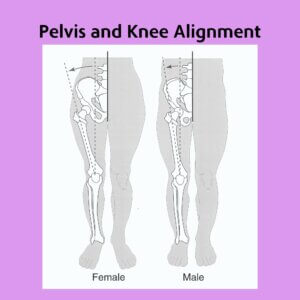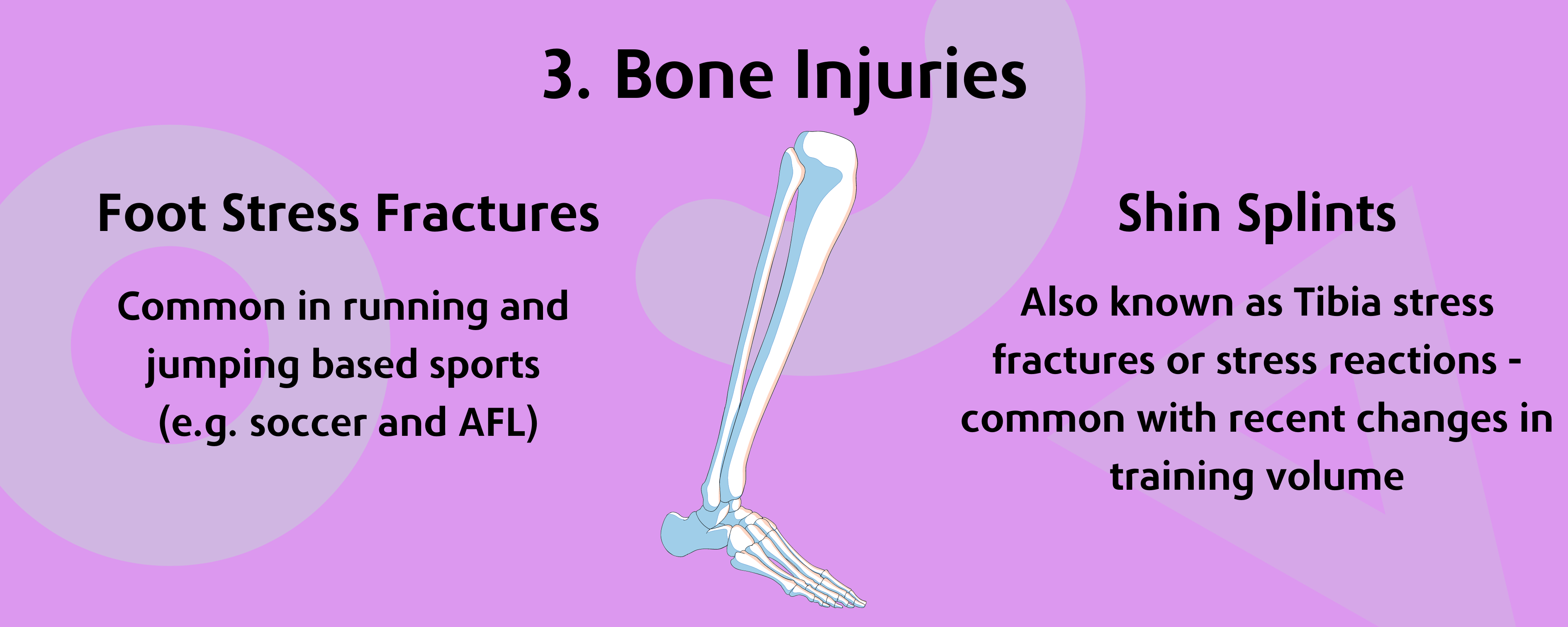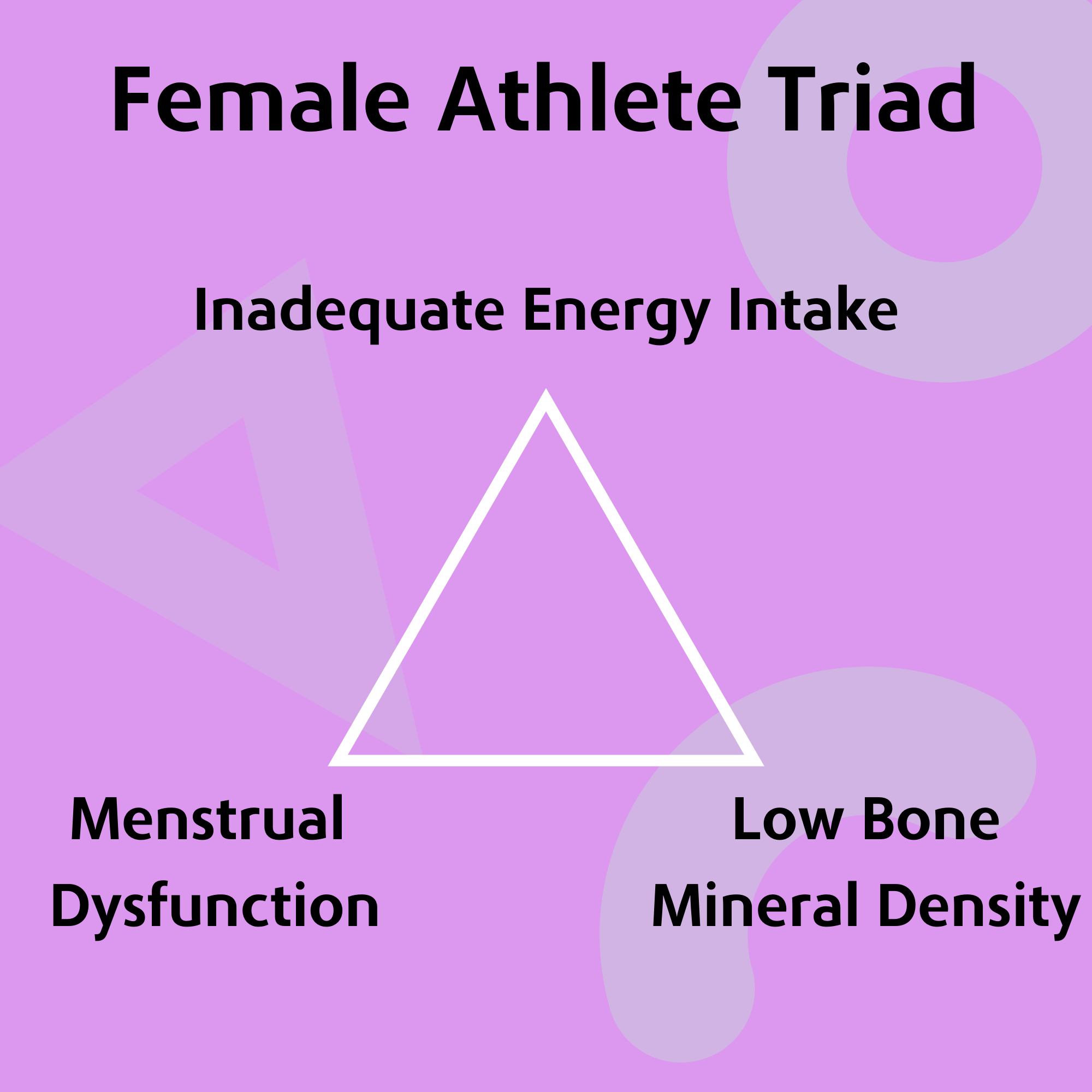Common sporting injuries in women – are you at risk?
1. SOFT TISSUE INJURIES.
Women and Men have different hormone levels –
Women have slower muscle activation rates –
Women have flatter feet on average compared to men –
2. KNEE INJURIES.
A woman’s pelvis is shaped differently –
Women typically have a wider shaped pelvis than men. This shape often leads to a much greater angle between the hip and the knee, which leads to more stress being placed on the knee during running and jumping. This increased stress is most often placed on the MCL ligament, which is a ligament on the inside of the knee, making it prone to injury.
This angle also causes a higher risk of poor alignment between the kneecap and the bone through the thigh (femur). This poor alignment can result in the cartilage through the back of the knee becoming inflamed and painful resulting in patellofemoral pain syndrome.
Women have less space for the ACL ligament to move.
This lack of room in the knee joint for the ACL ligament to move and stretch when the knee is twisting and turning adds more stress to the ACL and puts it at higher risk of injury.
Women are more flexible (which isn’t always a good thing).
Due to hormonal differences women naturally have greater stretch of the supporting ligaments and tendons. This results in women having greater flexibility and range of movement of joints such as the hip and knee. With the underlying difference in joint alignment combined with greater ligament stretch, puts female athletes at greater risk of injury to the key support structures in the knee such as the ACL and MCL ligaments.
3. BONE INJURIES.
Why are women so susceptible to bone injuries?
Women are prone to Low Calcium and Vitamin D Levels –
Women are more likely to suffer from low calcium (Ca) and vitamin D (Vit D) levels. Ca and Vit D are essential to developing and maintaining a good level of bone density. Lower bone density levels put female athletes at high risk of developing bone stress related injuries.
Lower bone density is most common following pregnancy, a period of breastfeeding and post menopause. However, in female athletes over training and not fueling the body with enough healthy food can also lead to low bone density. Some of the early signs that an athlete may be at risk of developing lower bone density is a change in the menstrual cycle (either a delay or complete lack of period). This combination is often referred to as the “Female Athlete Triad” and looks at the relationship between energy intake (food consumed), menstrual dysfunction (changes in menstrual cycle) and low bone density (weaker bone structure).
Women often have less muscle mass –
Due to lower testosterone levels female athletes have lower levels of lean muscle mass and therefore have a lower ability to absorb force with jumping/ running (high stress) based sports. This means that the bones through the foot and lower leg take on the role of absorbing more force, increasing the risk of bone stress injuries.
Women naturally have smaller and thinner bones –
The reduced thickness of the bones themselves reduces the ability to deal with higher stress, resulting in greater risk of injury/ irritation.
So that’s a short list of the reasons women are more susceptible to injury, but what can we do about it?
While there are multiple known reasons why female athletes are at higher risk of many sport injuries, with new research we’re starting to understand what things women can do to reduce their risk of getting injured.
While research is ongoing, below is a list of the ways that you can reduce your risk of injury right now.
Tips for women to reduce their risk of injury when playing sports or exercising –
-
Increase your training time / intensity …. gradually! –
Bones and soft tissues adjust well to gradual increases in stress. So, if you’re returning to training after a long break or starting to train for an event or competition and want to increase the regularity or intensity of your training, then plan to gradually increase over several weeks.
-
Consume a diet that meets the needs of your body –
After exercise (training or competitions) it is important to consume a diet filled with adequate sources of important vitamins and minerals. Replenishing the energy sources the body has just burnt while exercising is important to help the body to develop lean muscle mass and produce important hormones such as estrogen. Further helping to prevent loss of bone density and prevent injuries from stress fractures to soft tissue injuries.
-
Monitor your menstrual cycle –
By monitoring changes to your menstrual cycle, you can often pick up early signs that your body is not coping with the training load, or even if it is not receiving enough food. Not eating enough to refuel after exercise affects the body’s ability to perform essential jobs such as hormone production.
-
Be consistent with your exercise (and do it standing up!) –
Ensuring you continue to perform low to moderate intensity exercise in “weight bearing positions” – e.g. walking, jogging or light weight training – through all stages of life can help to promote continued new bone cell growth and help to prevent the development of conditions such as fractures and osteoporosis (low bone density) later in life.
-
Make sure your training is specific to your needs –
Make sure your training is specific to your sport. While your training should focus on the skills or movements specific to your sport it is also important you have the endurance to get through the game without too much fatigue.
It’s also important to be aware of the more common injuries in your sport, and make sure that your training also focuses on injury prevention. For example, if you play AFL, make sure you perform some weight training to help build strength in both the hamstring and quadricep muscles (the main muscles that support your knee). While also practicing drills that involve change of direction and pivoting to help further prevent injury occurrence.
-
Make sure to get enough rest and recovery time –
While a lot of focus is on the importance of training, making sure you have enough rest to recover from training sessions or competitions is equally important. Rest days allow the body to heal and provide the body time to adjust to training and grow more lean muscle (allowing you to get stronger). On these rest days you can keep your body moving by going for a walk, performing some stretching or foam rolling or perhaps even doing some light exercise different to your sport (e.g. go swimming if you’re a long-distance runner). -
Listen to your body –
If you have experienced multiple episodes of the same injury, either to the same area or across both sides (e.g. ankle sprains on both ankles), this may be the body’s way of telling you that it can’t cope with the task or load you are asking your body to complete. This is a sign to reassess your training load or perhaps have the areas assessed for lack of strength, ability to stabilise or poor movement patterns.
-
Seek help and guidance if you’re unsure what exercise is best for you –
If you need guidance on how to recover from an injury, or if you keep getting that same niggle in the knee every time you go for a run, then seeking support from your Physiotherapist may help. Physiotherapists are trained in assessing the body’s movement, diagnosing injury, and recommending exercises when you have an injury. Which can help you to get back to doing what you love sooner.
Pathways Physiotherapists, Nicole and Jayde, have a special interest in treating female athletes and a passion for all things Women’s health. If you have an injury you would like to have assessed you can book online to see a Physiotherapist HERE.


